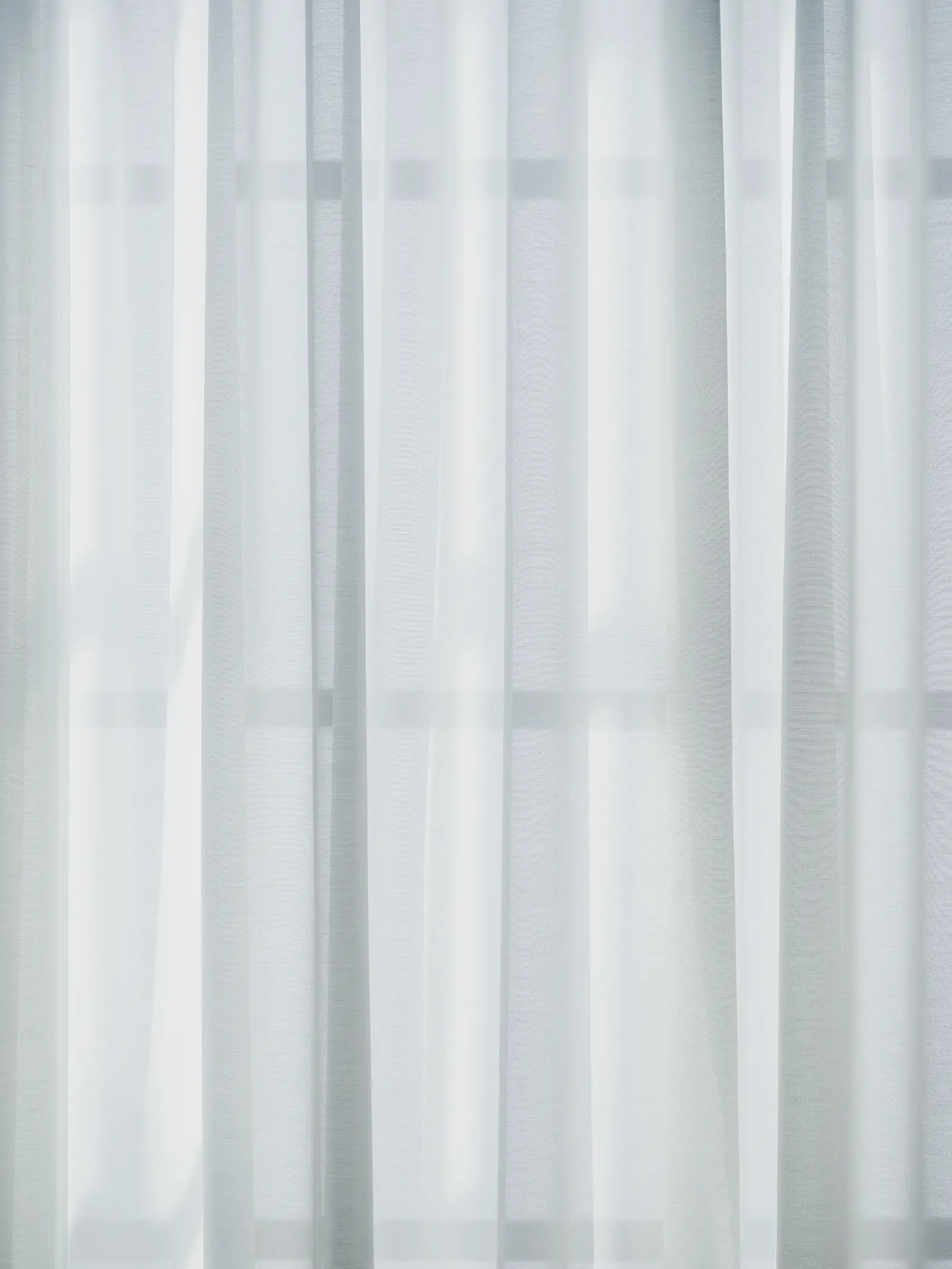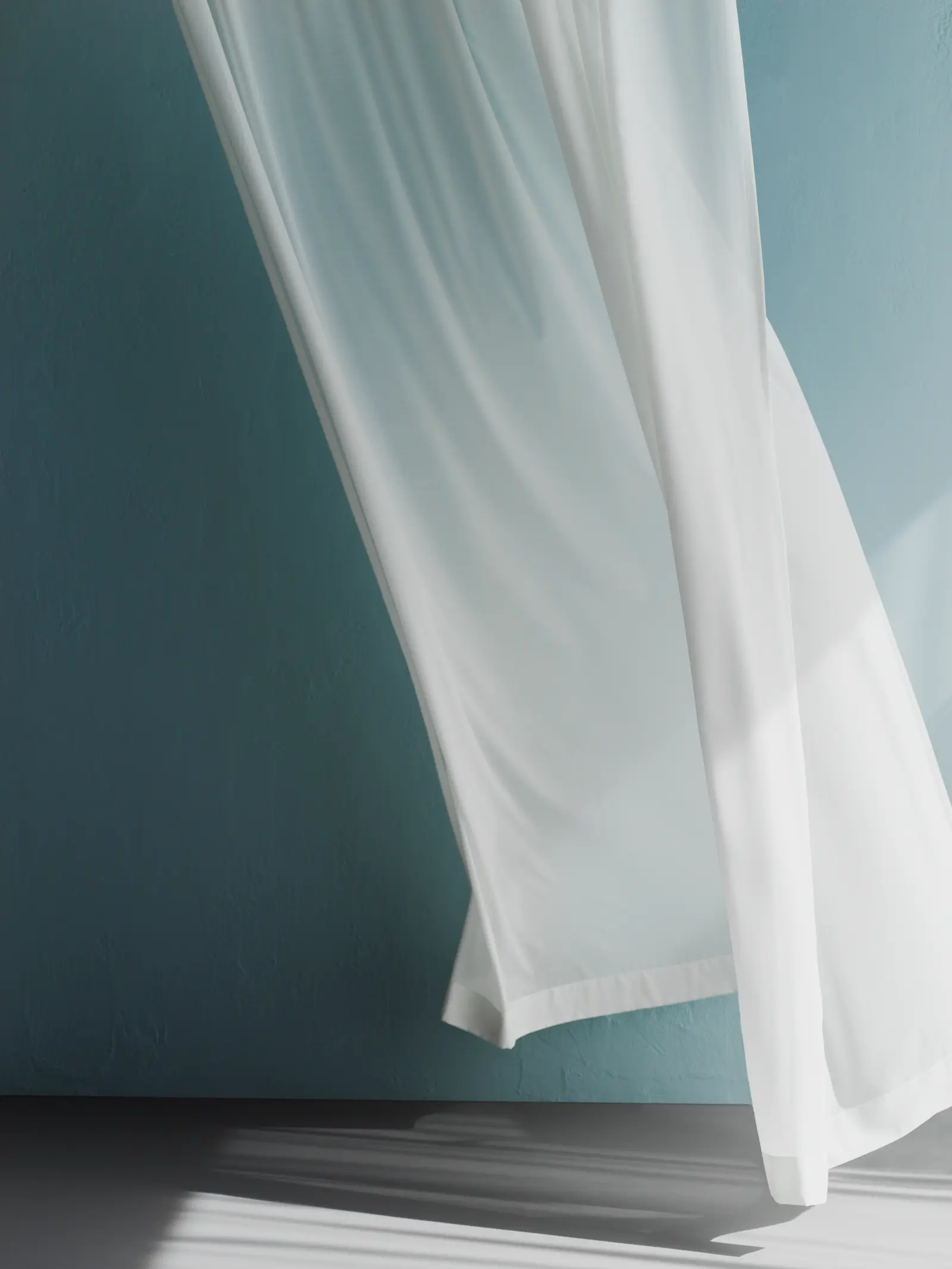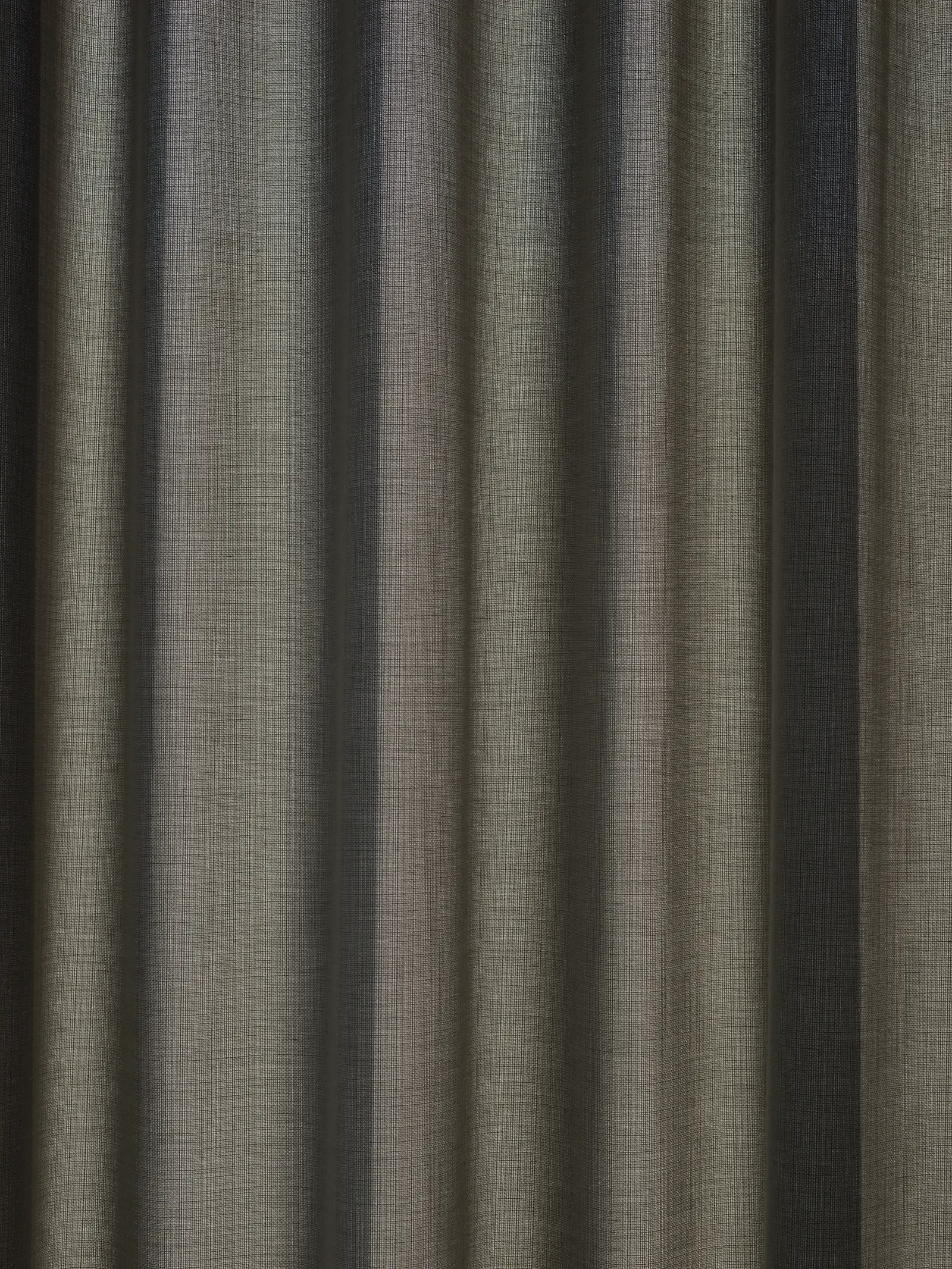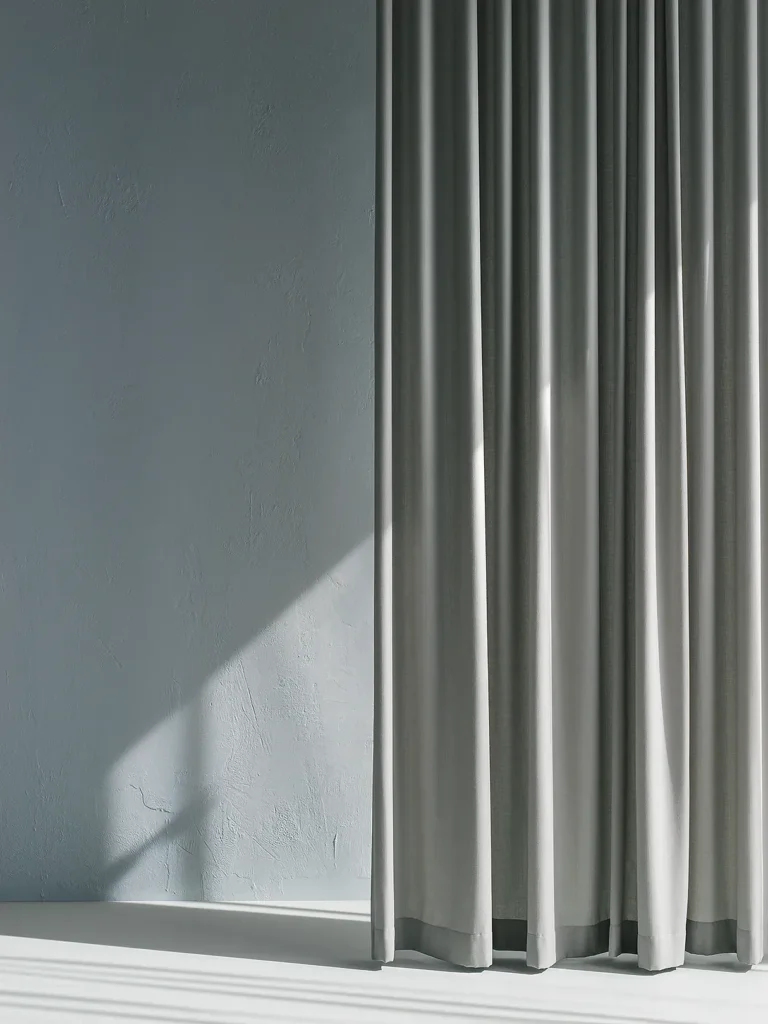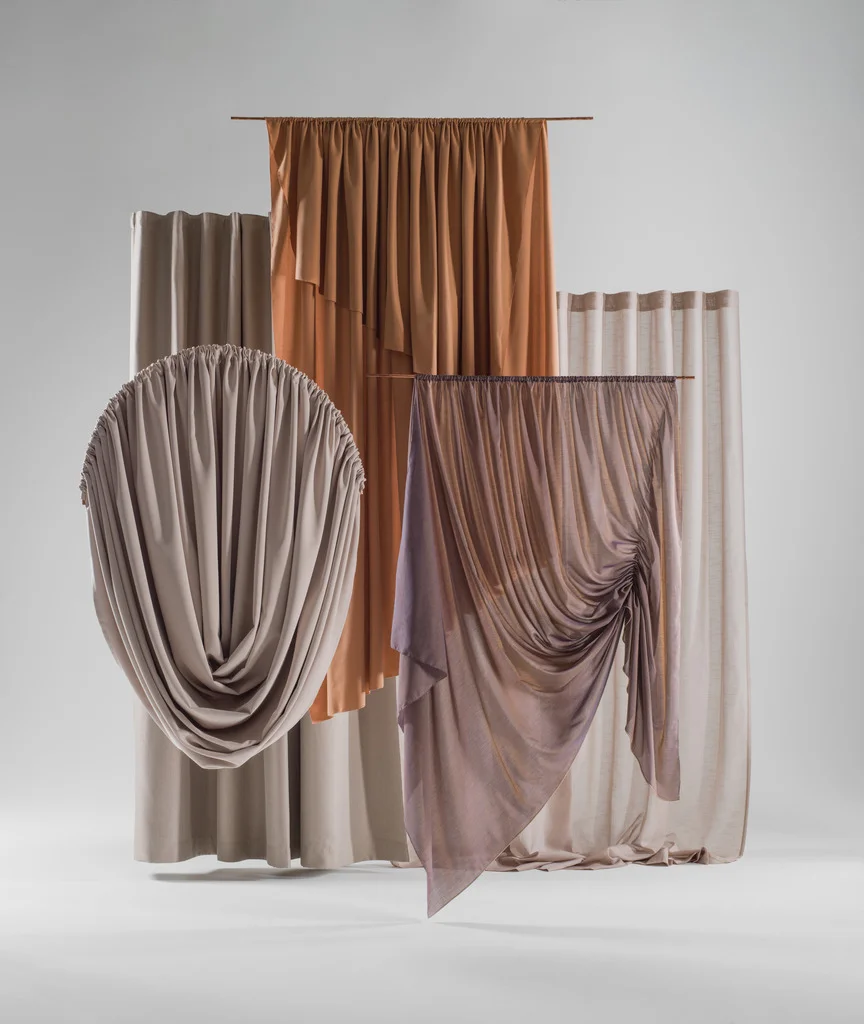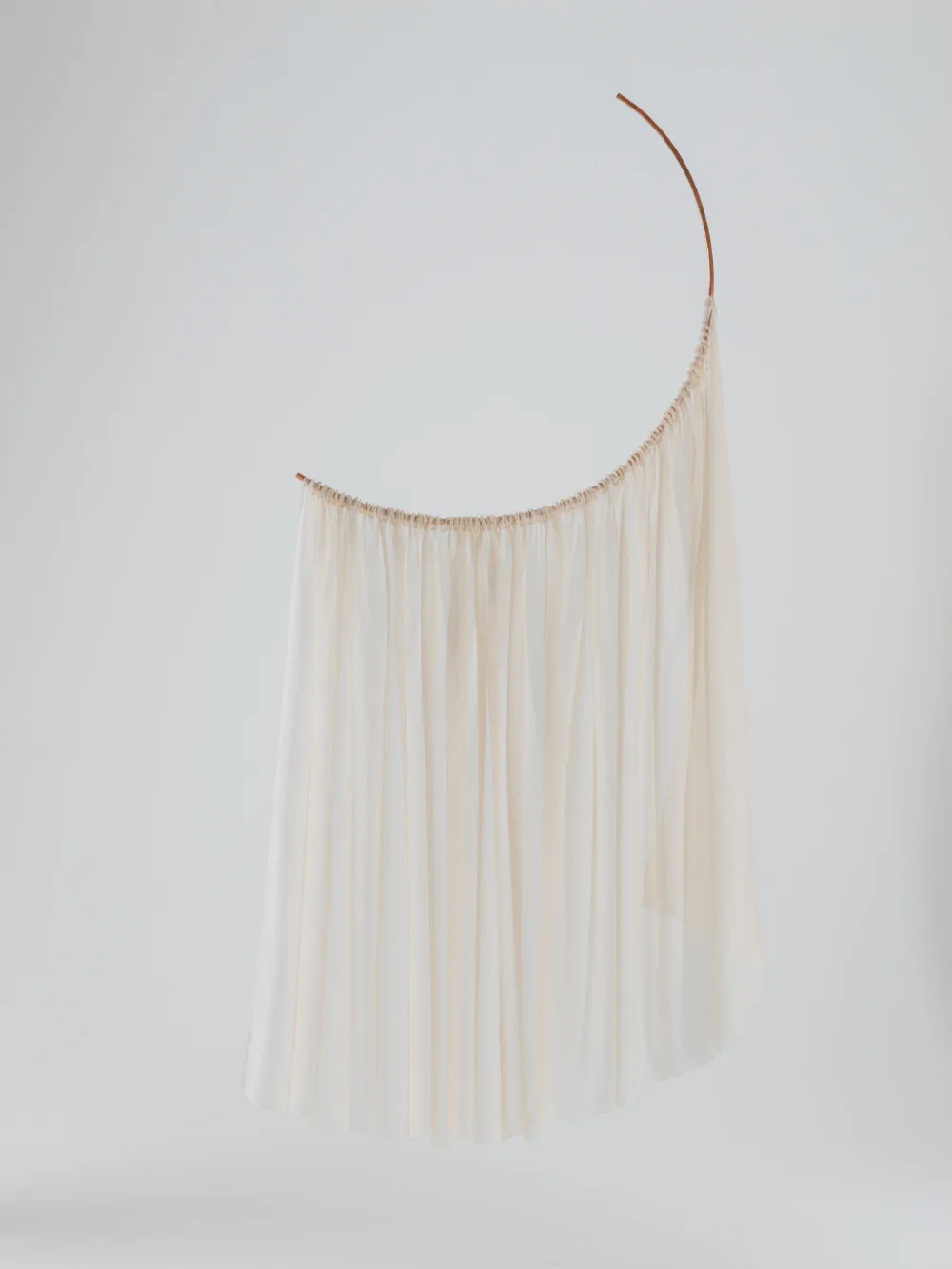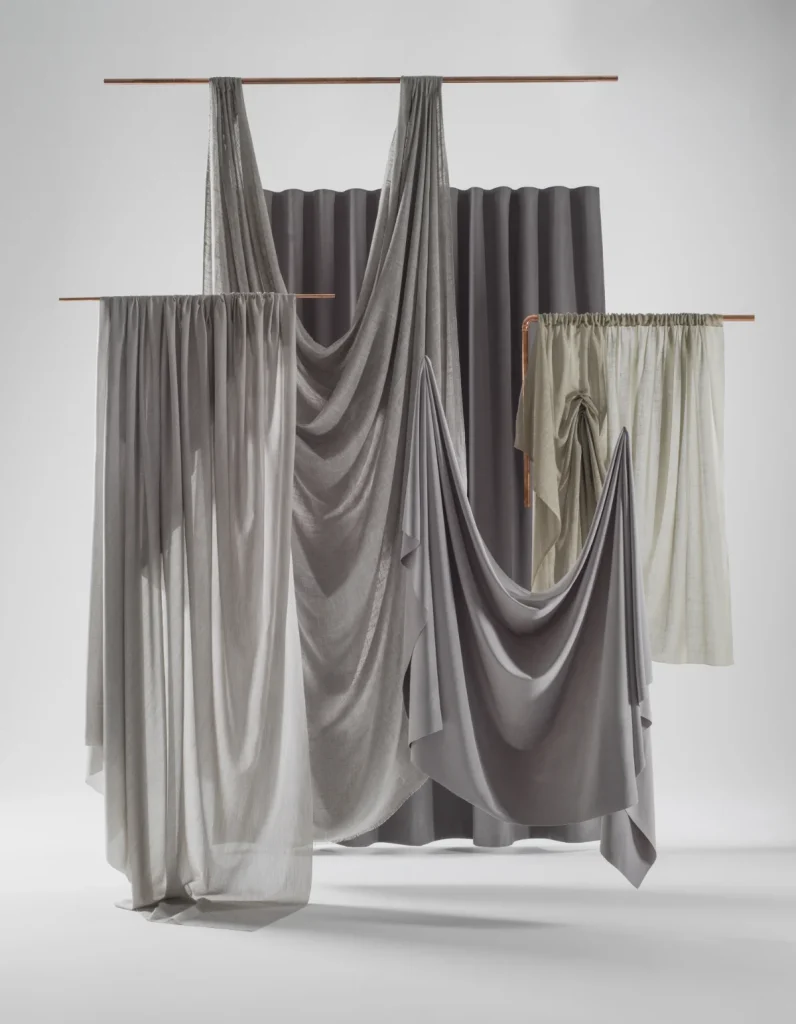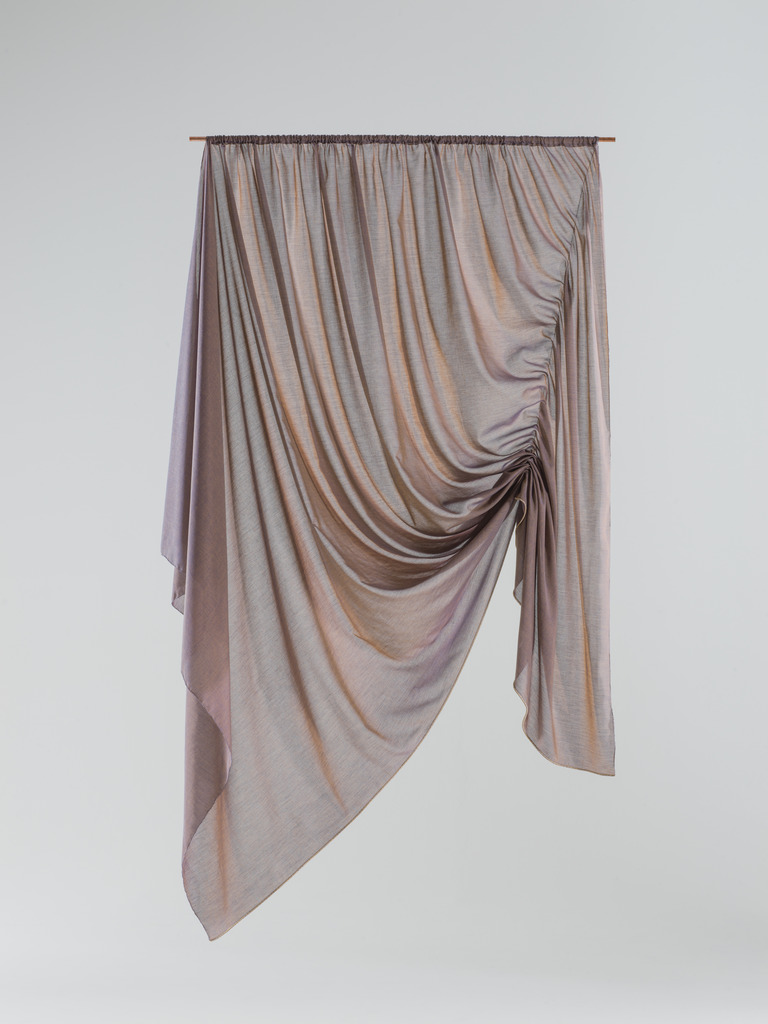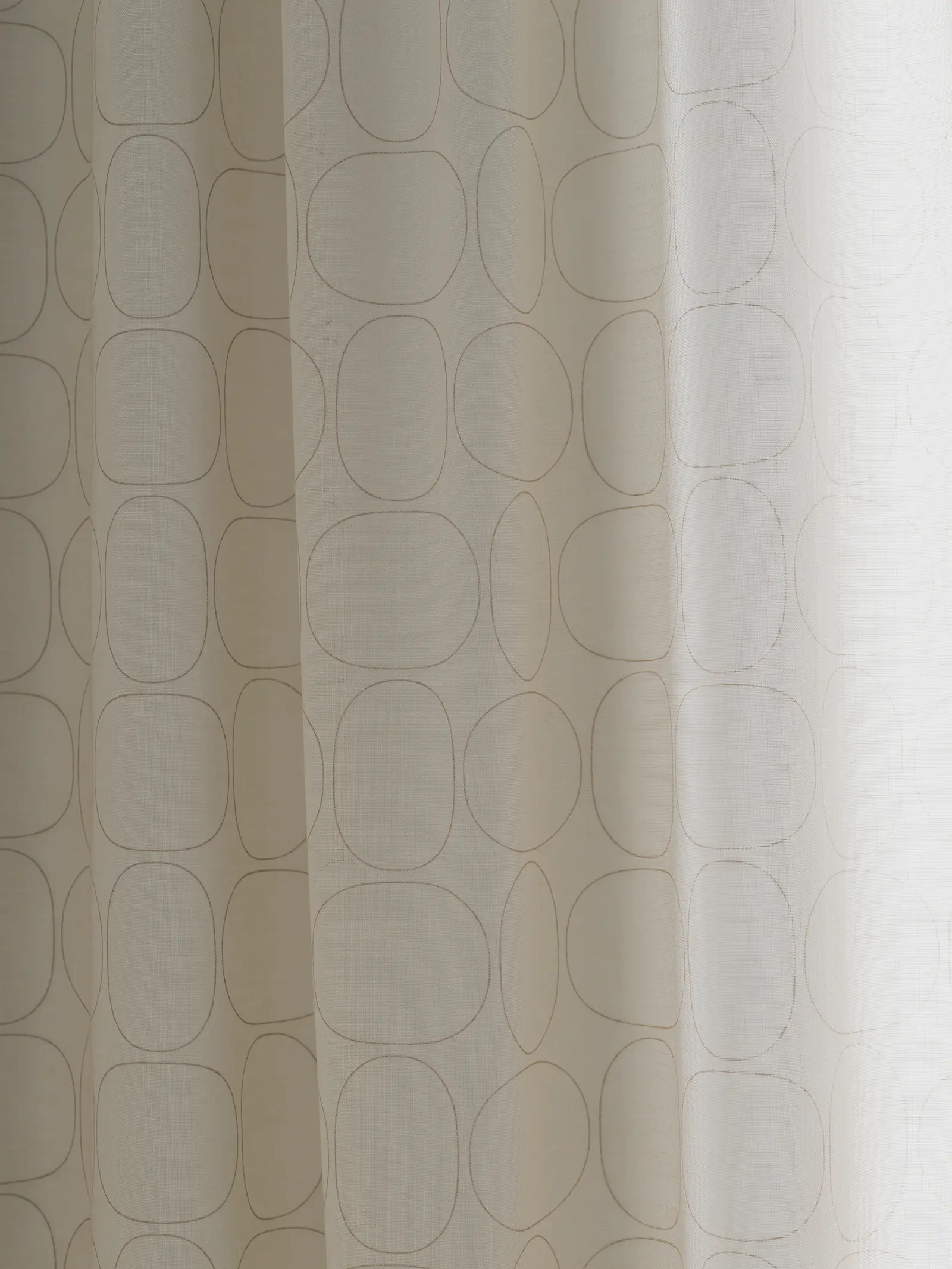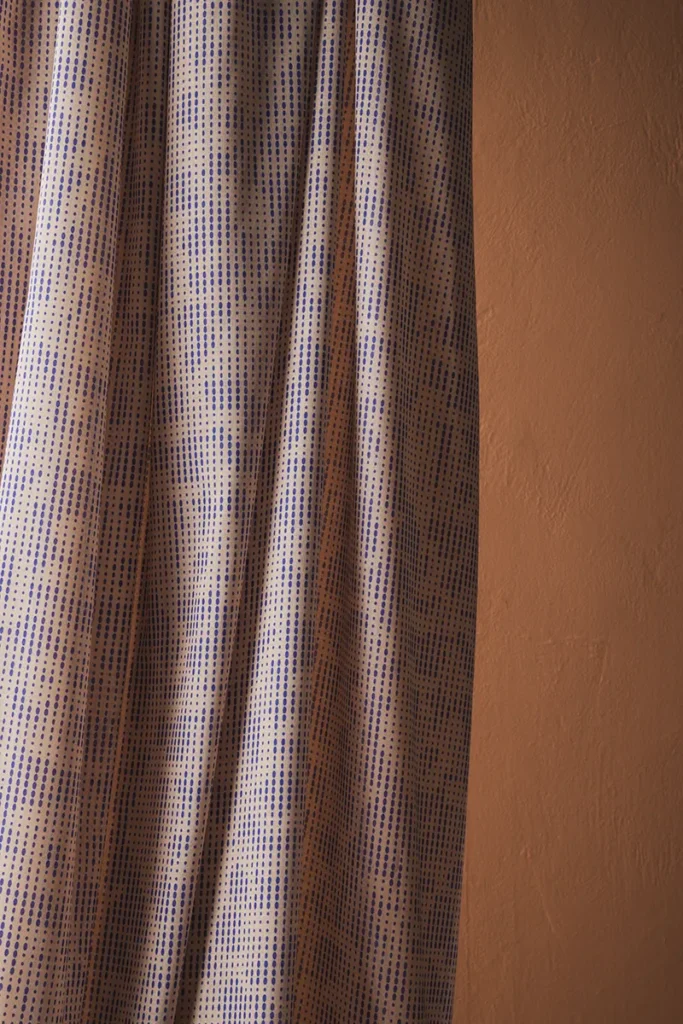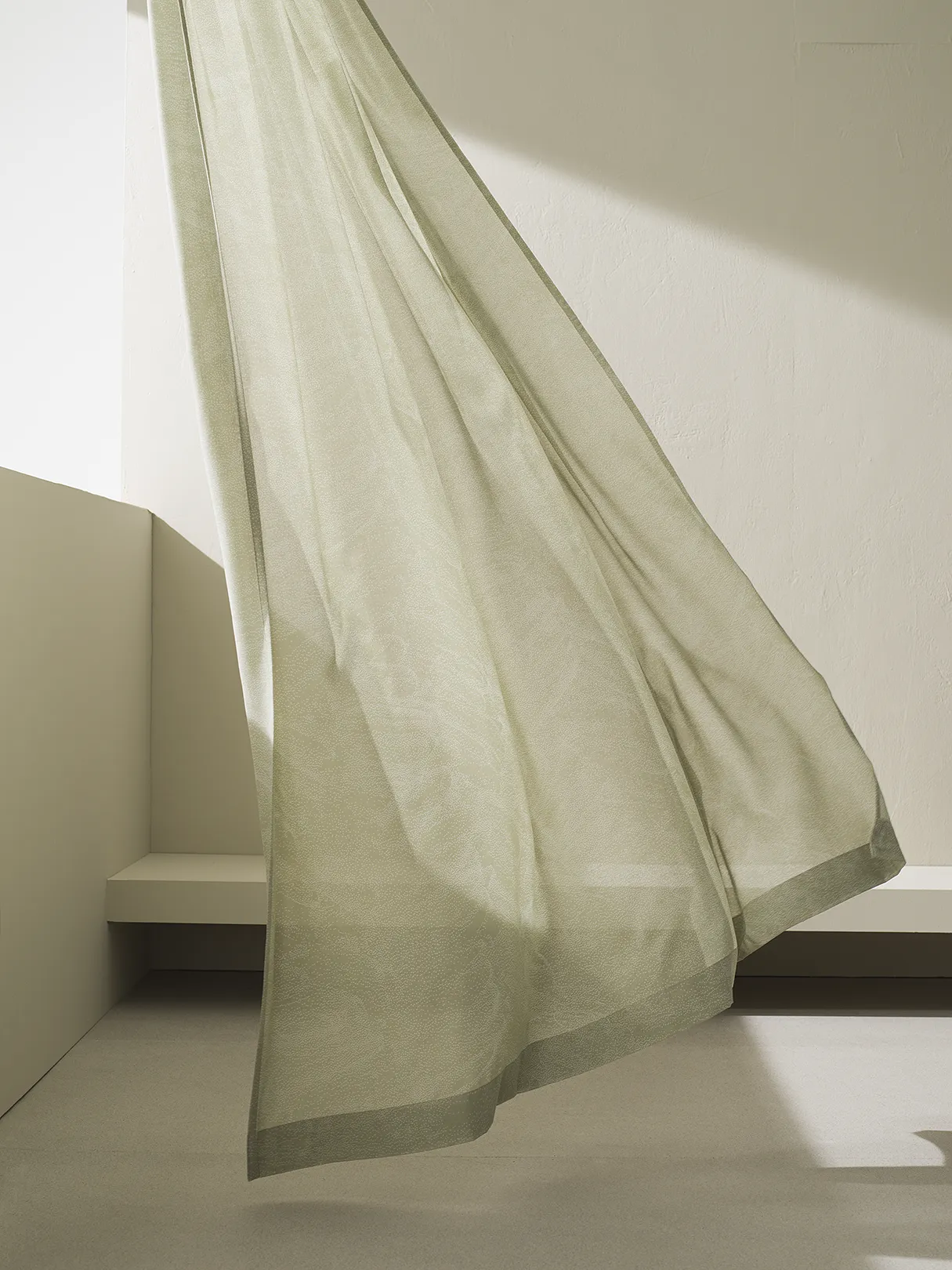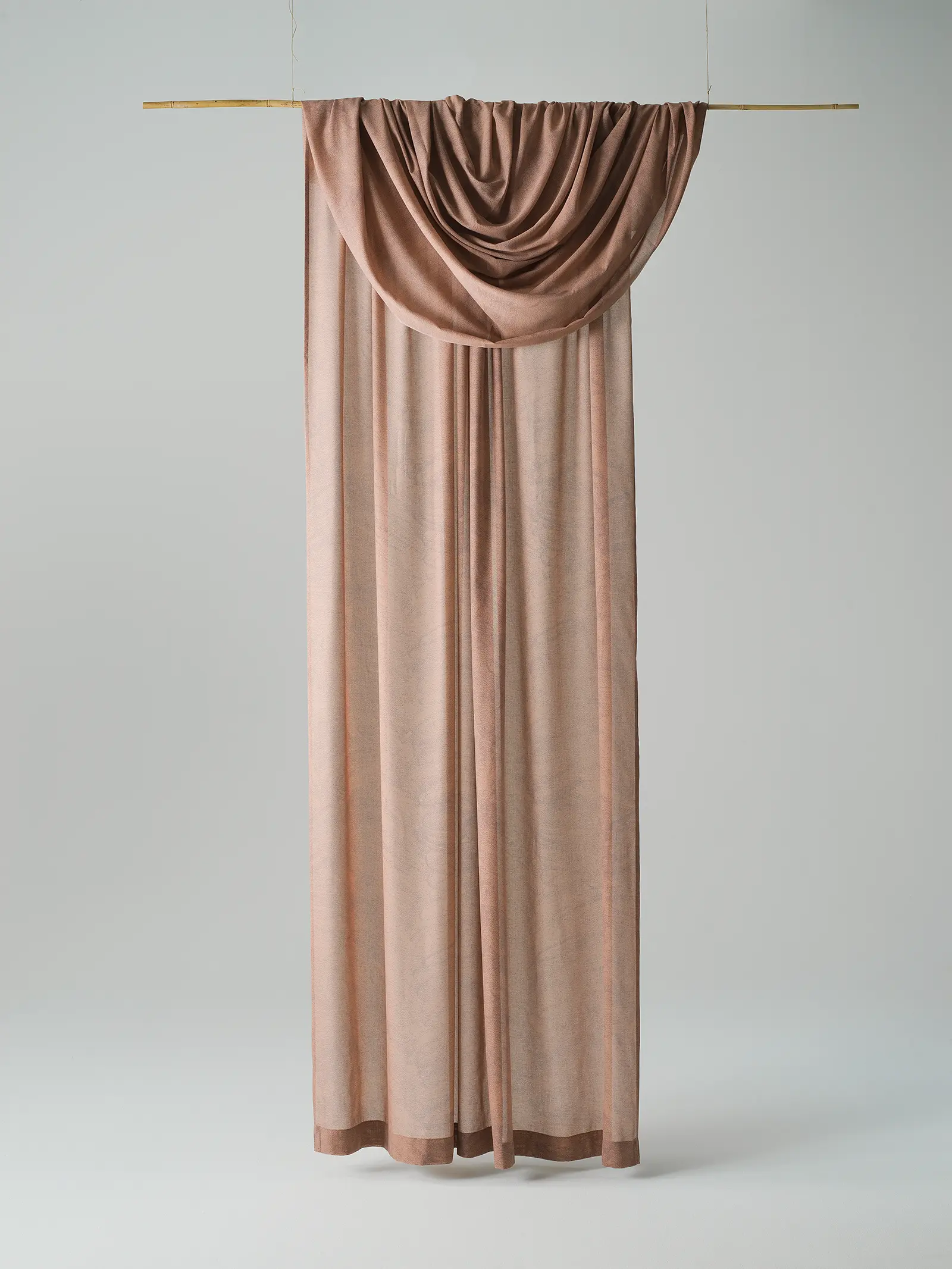Hanging textiles for public interiors
Our hanging textiles are designed for today’s public interiors – managing light, temperature and acoustics while helping to define zones in open spaces. The collection offers a wide choice of coordinated fabrics in different transparencies, textures and colours – from airy voiles to heavier qualities that add structure and presence.
Explore the key qualities that define our collection:

Discover our range of hanging fabric
Explore products12 shades. One expression. DEEP.
A textile that defines rhythm, structure and softness. Designed with White Arkitekter – now available in 12 curated shades.

Smart solutions for light and sound
From sheer voiles to blackout and high-performance dimouts, our textiles shape both light and sound for better comfort and wellbeing. Designed for today’s public interiors, they balance transparency, privacy and acoustic control – helping to create calm, functional spaces for work, rest and interaction.
Each fabric is tested for light transmission and acoustic absorption (Class A–E), ensuring verified performance that supports comfort and concentration throughout the day.
Our fabrics help you:
- Diffuse daylight and reduce glare
- Soften sound and reduce echo
- Control transparency and zoning
- Combine function with timeless texture
Conscious choices that meet modern standards
Our textiles combine contemporary performance with responsible choices. Certified by OEKO-TEX® Standard 100 and the EU Ecolabel, and developed within our Five Zero Green programme, they meet today’s highest standards for safety and sustainability.
Within our Circle Textiles collection, we use 100% naNea™ fibres – a biodegradable, toxin-free innovation with Cradle to Cradle Certified® Gold status – while other ranges incorporate recycled polyester to reduce waste and support circular textile production.
Certifications
- OEKO-TEX® Standard 100 certified
- Cradle to Cradle Certified® Gold
- EU Ecolabel approved
Flame-retardant options for every project
Choose from both flame-retardant and non-retardant fabrics to meet project-specific safety requirements – without compromising on design. All flame-retardant collections comply with national and EU-wide standards.
-
Certified flame-retardant collections
-
Easy-care, durable qualities
-
Full technical documentation for every product
Browse hanging fabrics made for professional interiors.
We’ll guide you through the entire process – helping you match your vision with the right fabric, backed by function, form, and technical data.
Our timeless collections, designed to last
CIRCLE TEXTILE
DRESS & DEFINE
PIET HEIN collections
DEEP
SANDSTORM II
12 shades. One expression. DEEP.
A textile that defines rhythm, structure and softness. Designed with White Arkitekter – now available in 12 curated shades.

Designed to complement your project vision
Our in-house design team curates colours across collections, making it easy to coordinate curtains, rugs and solar protection systems within a unified concept.
Performance verified with technical documentation
Every fabric is performance-tested and supplied with full technical documentation — ready to support your design process, planning and compliance.
Download product sheets with:
- Acoustic absorption class (A–E)
- Light transmission values
- Flame retardancy standards
- Widths, weights and compositions
- Cleaning instructions
Made for wide spans and dual-sided use
Many fabrics are turnable and available in extra-wide formats – ideal for room dividers, railroading and large-scale windows. Fewer seams, faster installation, and a sleek, minimal finish.
Let’s collaborate on your next interior project
Order samples and get expert guidance, technical data and everything you need to specify with confidence.
Order samplesHanging fabric packed with function
From turnable and extra-wide formats to sound-classed and flame retardant qualities – our textiles are made to meet the specific demands of public interiors.
Backed by verified technical data and a strong design foundation, Almedahls helps you create functional, cohesive environments with confidence.
